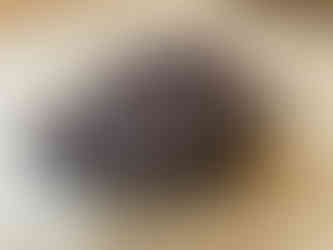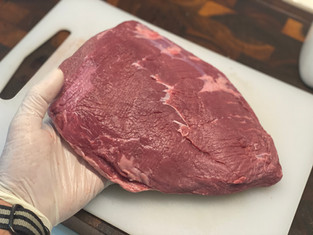
Normally at TKC, we love our Picanha (a.k.a. Rump Cap) on a rotisserie, gently spinning around until we hit the perfect medium rare temperature of 130F (54C). We'll skewer 3 of them together and hit that fat cap with a monster helping of kosher salt. This time however, we wanted to try out a little experiment and see if we could smoke a picanha like we would a beef brisket. The result? Not too bad actually!
The night before you smoke the picanha, dry brine it with a good helping of kosher salt. No need to hit the fat cap for the overnight dry brine because the salt simply won't penetrate. Let it sit in the fridge for 24 hours until you're ready for smoking.
Set up your kamado for indirect heat and stabilise it at 225F/107C then throw in a few small chunks of your preferred wood. For us, we used 4 small chunks of Lychee wood, my new favourite to smoke with! Now, make sure you use regular hardwood lump charcoal for a low and slow 8+ hour smoke. We played around with using Binchotan charcoal (white charcoal) and folks...don't waste your time with it unless you're doing a direct heat, hot cook. It doesn't do well for low temperatures and I had to restart the coals three times in 8 hours. Grrrrrrr....
Anyway, the prep is easy. After you've dry brined the beef, remove it from the fridge and hit it up with a really simple rub of 1 part kosher salt, 1 part fresh cracked black pepper, 1/4 part garlic powder and 1/4 part onion powder. Cover both sides and the edges with a good solid coating of rub, you'll not be disappointed.
So now onto the kamado, indirect heat and fat cap down for the first hour. After that, put the picanha into a small aluminium container to catch all the amazing fat and juices that would otherwise splash onto your deflector causing a ton of unwanted smoke! Let it ride for the next 7 hours or until your probe thermometer reads 203F/95C.
Once done, wrap the picanha in some butcher's paper and a towel and set it aside to rest for about 20 minutes. Then, simply cut it like a brisket, against the grain. I took the leftover fat and juice and poured it over the top before slicing.
Our team loved it, and it's a fun way to experiment with a different cut of beef. Give it a try and let us know how it goes.




























Comments